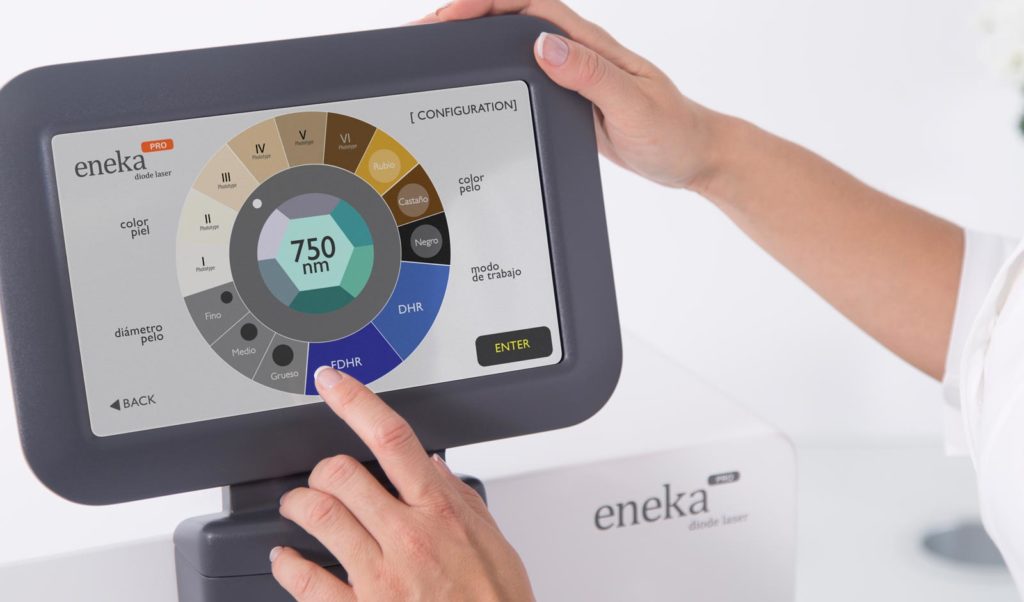
Many of our clients in Buckingham are interested in the theory behind Laser Hair Removal. Diode Laser hair removal is based on the theory of selective photothermolysis. This theory was developed from the clinical work showing that the hair follicle can selectively absorb energy sufficiently to disable it without causing damage to the surrounding tissue.
In order to achieve this a high powered laser with a wavelength that is highly absorbed by the melanin (dark pigment) that surrounds the hair follicle is required. At the same time the skin must be protected or cooled to prevent it overheating and causing damage.
To achieve destruction of the hair follicle the base of bulb of the follicle and the bulge which contains germ cells must be heated up to 70 degrees in order to prevent regrowth of the hair. To do so will achieve permanent destruction of the hair follicle and it will not grow back. The challenge though is that the skin begins to damage at 44 degrees so how do we heat the follicle to over 70 degrees while keeping the skin well below 44 degrees?
One essential element in achieving this objective is efficient skin contact cooling to keep the surface of the skin cool while the laser energy is delivered deep in the follicle. This also maximises client comfort. Other factors such as skin type or colour, hair colour and hair thickness all effect the level of absorption and the energy required to achieve follicle destruction. Darker skin has a higher melanin content and this slightly reduces the energy reaching the follicle. Finer lighter hair has less melanin and therefore less target for the energy so higher energy is required.

Another important element is the time it takes for the skin and the hair to lose heat immediately after each laser pulse, this is called the Thermal Relaxation Time. The skin cools much quicker than the follicle so delivering the laser energy in a fraction of a second to allow the skin to dissipate heat but keeping the follicle heat allows maximum heating of the follicle whilst protecting the skin. This time is called Pulse Duration. A very short pulse duration is recommended for best results on finer lighter hair.
What is the best technology?
A laser that combines high power, contact skin cooling, high absorption wavelength and shot pulse duration can safely heat the follicle for destruction of the hair and permanent removal. Not all lasers can achieve this. There are many low powered lasers without skin contact cooling that will simply damage the hair follicle. Without effective skin contact cooling the energy will have to be lowered to avoid damaging the skin and as a result the required energy only makes it a short way down the follicle. The hair may appear to be removed but it has not been destroyed and will regrow.
As a result you will require ongoing treatment, in effect no better than waxing. Many IPLs operate like this as they do not have a single wavelength resulting in wasted energy or effective skin cooling. Also many cheap laser systems, often from China have flooded the market but they simply do not have the power or cooling to achieve permanent results.
To achieve a short pulse duration requires high power. Their low price is attractive to clinic owners but the poor quality of treatment costs them in the long run. Investing in a high quality laser that can deliver high power, effective cooling and short pulse duration can achieve permanent results in a little as 6 sessions saving clients time and money as well as a safe and comfortable treatment.
The Eneka PRO Diode Laser Platform offers these characteristics. Eneka PRO with up to 5000 Watts of energy is twice as powerful as any other Diode laser and has USP (Unique Short Pulse) technology and sophisticated integrated skin contact cooling. With its large spot size it can deliver deep penetration in a very fast and painless treatment.